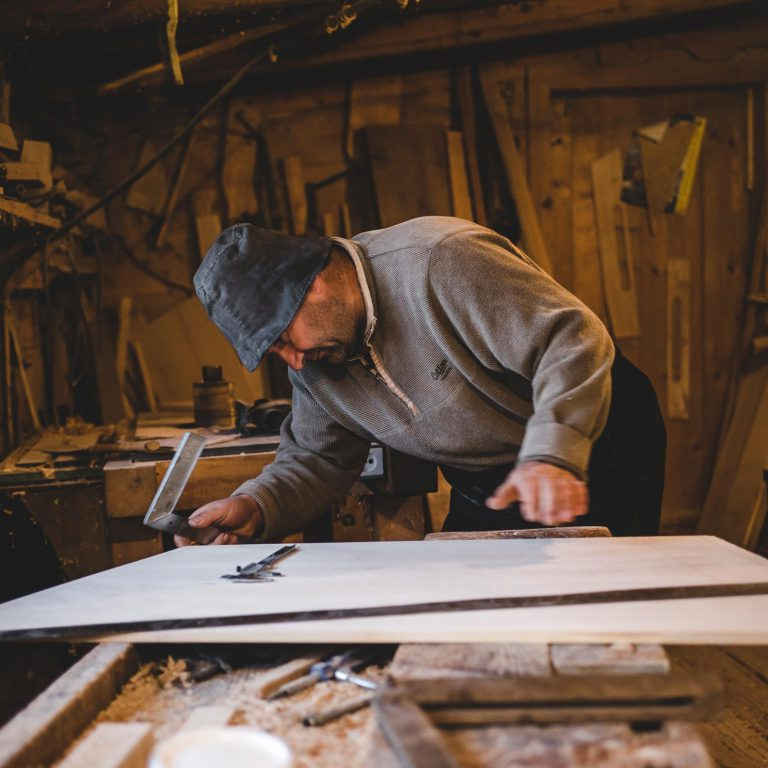It’s hard to imagine the Ukrainian native music without cymbals. It’s an ancient stringed instrument was an inalienable attribute of weddings and other celebrating events, folk ensembles always had a cymbalist in its composition. Nowadays hardly anyone can teach play the cymbals, and it’s really hard to buy this instrument: cymbals are made on order in only one factory in Lviv. There are also few masters who make cymbals by their own.
One of them is – Ivan Dzvinchuk, who is a citizen of the Carpathian village Kosmach. The master has already made over 30 instruments and continues doing his favourite thing. One of the first cymbals he made for his son for playing. Now he makes instruments for the School of Music and makes private orders.
Kosmach on Hutsulshchyna
Kosmach — it’s the biggest village in Hutsulshchyna and it’s one of the oldest in Ukraine. It’s a picturesque and interesting place, so a lot of writers, directors and artists are inspired by it. The village is so beautiful and spacious, that inspires a lot of people to make art.
You can buy anything from locals: starting from hutsul jugs and ending with blacksmith’s products. Kosmach is known for its vyshyvankas, pysankas and music masters.
The fate of the leader of opryshky Oleksa Dovbush is connected with Kosmach — his fight with oppressors started from here, he has formed the first insurgent detachment, and here he died at the hands of a traitor.
The toponym “Kosmach” means “the house of sunlight” in Sanskrit. So-called green tourism is developing in the village, there’re routes for hiking walks, local history museums, restaurants with hutsul cuisine which invite you to a tasting.

Ivan Dzvinchuk
Cymbals — it’s an ancient stringed instrument with a wooden corpus of the form of trapeze. The strings on the cymbals are led into the oscillation by the hit of a stick or a malleus. That’s why it has a metal, strict and quiet loud timbre.
Ancestors of cymbals were existing over 6 thousands years ago. Cymbals-shaped instruments were known in Asia, China, India from ancient times.

Ivan Dzvinchuk lives and works in Kosmach — a musician master, who loves his craft and is inspired by making cymbals.
The man has started to admire music since the childhood:
“(The first time — edit.) I’ve heard it at weddings. Mainly it was weddings in the clubs. When there were Shevchenko’s events, children have been performing in the club in times of Moskals. Now nobody performs like before. At that time it was forbidden but children continued doing it. Nowadays they don’t want to perform. I don’t know how it happened. Then there were small children and boys performing at the school. I was in that group too, I was playing the violin. Now there’re computers, Yamaha and etc., children are confused. When there wasn’t any of it — a child was studying. There were times — it was hard to earn money, so little children started playing at the weddings, like other boys. One was playing the violin, one was playing the cymbals, and another was playing the reed pipe. Then they started playing the bayans. There were times.”
Vasyl Cherniasvkyi, who lives in Shepit, has helped him to teach how to make cymbals.
“At that time he hadn’t already made it when I visited him, but he told me a lot of interesting things. Otherwise, I knew how to make drawing and I have learnt it on my own, I’ve tried to make cymbals by myself.”

“The whole process: from the searching of wood to testing of the instrument — Ivan does by his own. The man emphasizes that the production of musical instruments isn’t so easy because you have to be a little bit a blacksmith, a little bit a musician, a little bit a welder. Shorter, you have to do a lot of work.”
Production of cymbals starts from the provision of a good sycamore. It’s necessary to hack the tree in winter in order to insects won’t eat it.
“I was hacking such a big sycamore, that we were cutting it in three meters and a cross-section had about 80 centimeters. Three meters, two horses, it was winter. It was hard for horses to drag these cross-sections on short, not long, sleighs.”
Now, unfortunately, almost all sycamores are gone – it’s cut down.

It wasn’t always easy. At first, a master has been practicing a lot, till the production of cymbals hasn’t become a matter of life.
“It happened when there was something wrong with a string. There were different nuances at the beginning. For example, when I made cymbals and it didn’t hold a string, but it should. That doesn’t happen with hutsul ones. I didn’t have such problems with hutsul cymbals, but it was harder with bigger ones, because the strings are really thin and it pulls so much. There were millimeter strings, and there threaded strings, so here we are, it pulls so much. For example, a violin — it has four strings. And hutsul cymbals – I was making seven strings, so it was 189 strings. 4 and 189 – it’s a big difference.”
The first time, Ivan was making it all by his hands.
“I have a movie about how I’ve started to make my first cymbals. I was going to the chapels, and lighted candles there, and that’s how I’ve started to make my first cymbals. The first ones I made by my own. I bought the strings, but I was making pegs manually. (Now— edit.) I order it. It’s imported from Germany. It’s sold in the shops. We also take the strings from Germany. They bring it here to the shop and we buy it.”
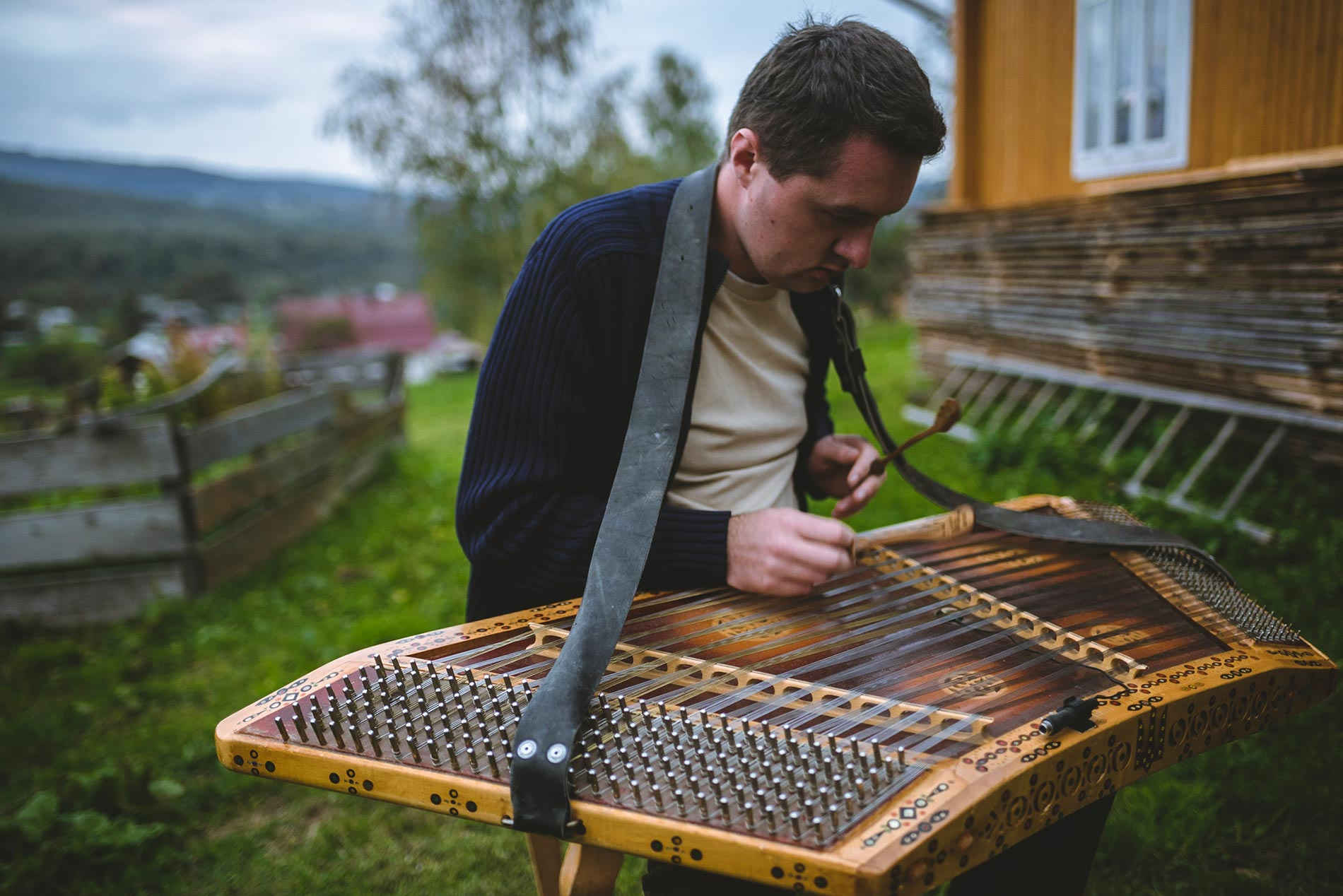
Mykhailo Dzvinchuk. Love of music as the heritage
Mykhailo Dzvinchuk, the son of Ivan, is also passionate about cymbals. Otherwise, he doesn’t make it, as his father, but he plays it.
The boy got carried away with cymbals due to carolers, and one of them, grandfather Hryts, was playing the cymbals. Mykhailo has decided to try and couldn’t stop.
The father earned by working with wood at that time — windows, doors, furniture. And then he made one of his first cymbals for the son.
“The first cymbals… Not first, but the second cymbals I made for him. When my son started playing the сymbals, it was hard to buy a really good one. I was looking everywhere to buy good cymbals. There were some of them but I didn’t like them. So I wanted to make cymbals for my son by myself and I made it.”
Mykhailo has been studying at Kosmatska School of Music since eleven (in Mykhailo Rybchuk’s class of cymbals), then he entered the Lviv School of Music. Now he is a teacher at the School of Music.
Production of the cymbals helped Ivan to pay for his son’s education.
“We needed money for education and for other things. We have a long way to Lviv. The apartment. By the way, scholarship is very small so it’s hard to live just having it. We have to pay for the road, for the apartment. We also should buy shoes and a jacket because he can’t wear all the clothes that he dresses in the village. City is a city.”
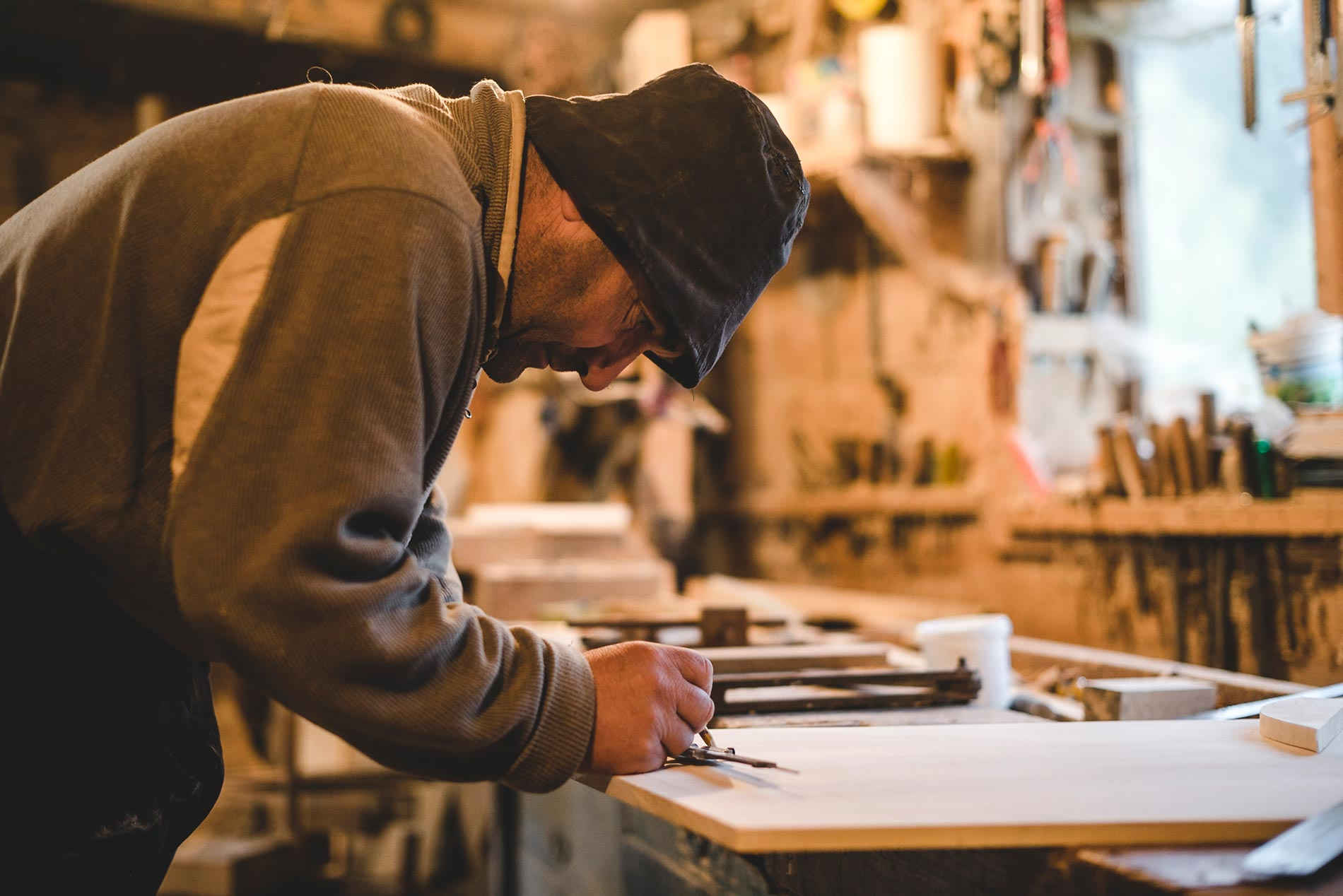
The process of creating the tool
Before entering a studio, Ivan changes his clothes into work clothes. He makes different cymbals: for the church, concerts and derivatives of Hutsul. He also collects and recycles old instruments.
If to calculate all spending on the materials, screws, wood and glue, the average price of the cymbals is $600. Ivan says that $600 for the cymbals is a really low price because a good violin or a guitar, which are handmade, cost about $2,000.
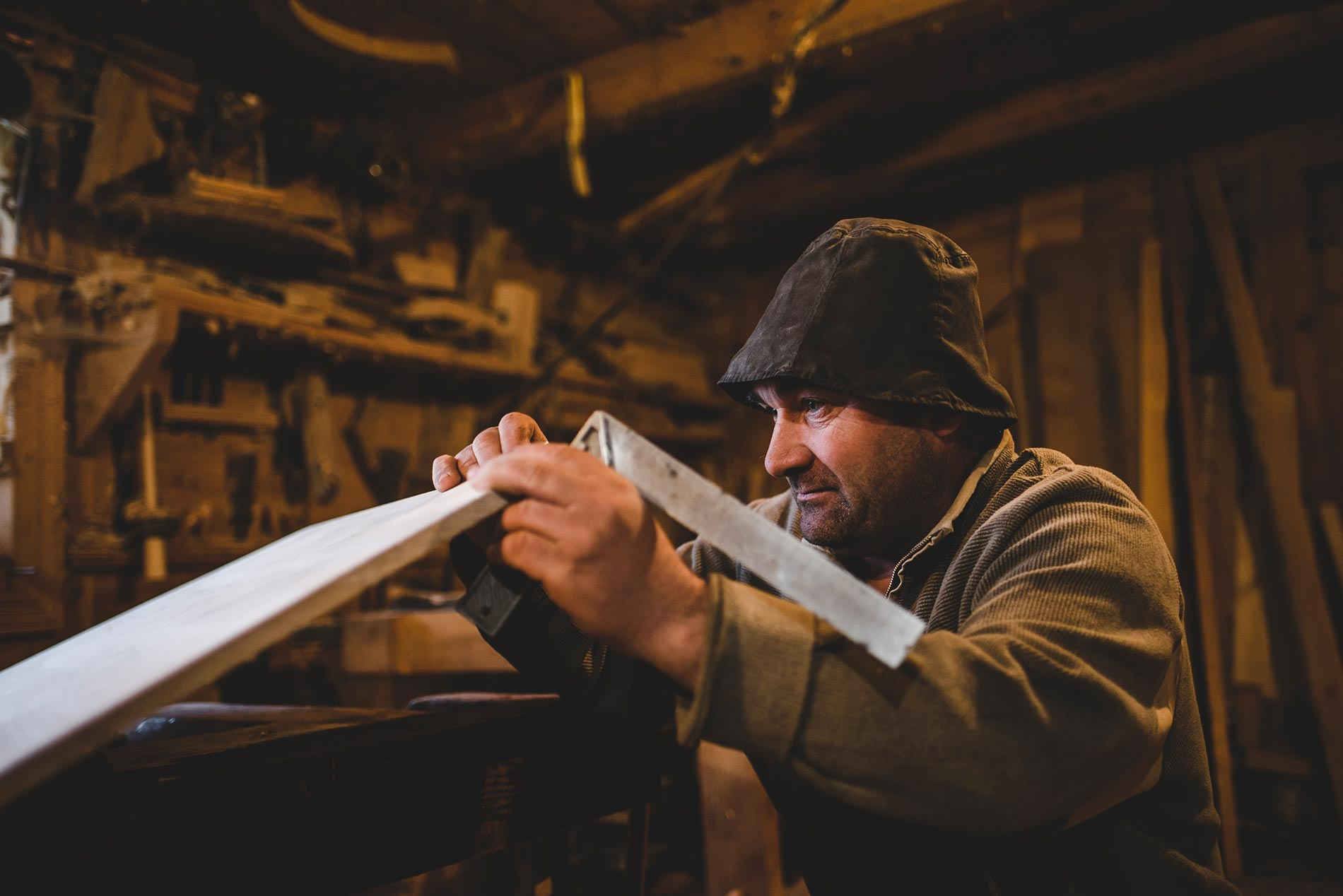
A lot of cymbals are made by the master for children:
“If a child wants to learn how to play, it hasn’t a possibility to have cymbals because in our country there’s no one who makes it. It’s really hard to find somebody who makes really good cymbals.”
Once cymbals are made about two months. Ivan does not work on holidays. This work is very delicate and ticklish; it has a lot of steps. Among the steps are harvesting wood, cutting boards and bars in the sawmill, etc.
“It takes usually 8-10 years in order for wood to dry in a natural way. It’s clear that with dryers the process of drying would be easier. Well, that’s not the case. Actually, 10 years of drying isn’t very long term, it would be better if wood could dry longer.”
The next step is sawing on the details, on the boards, working out on details and drawing.
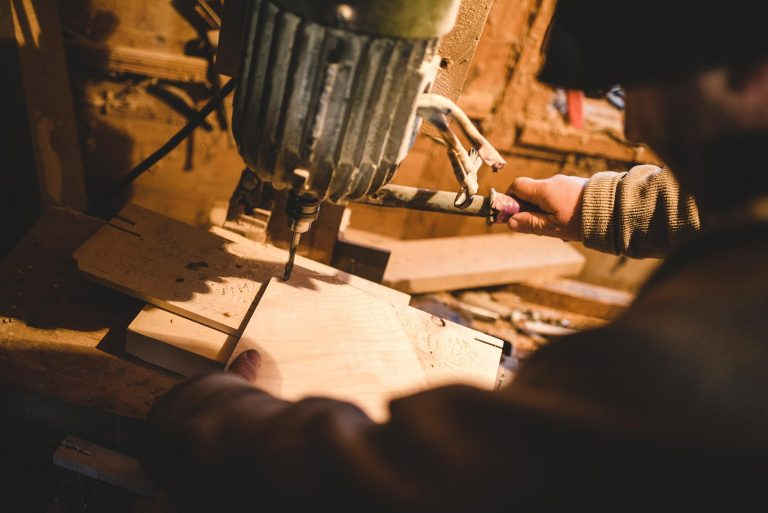
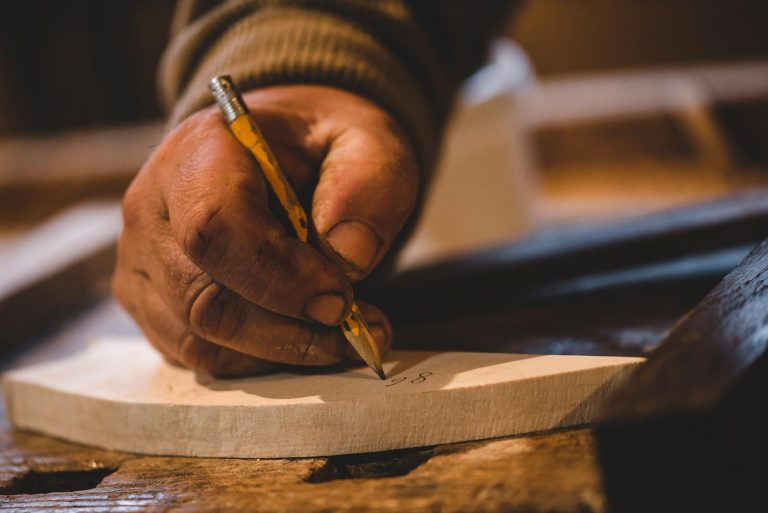
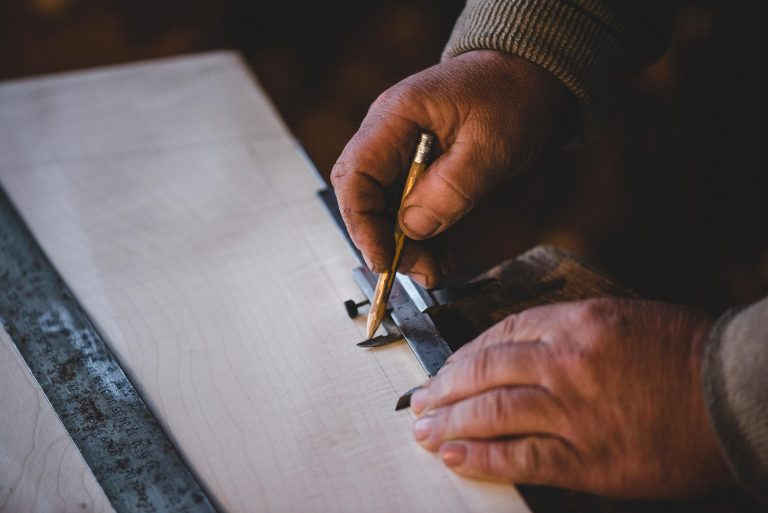
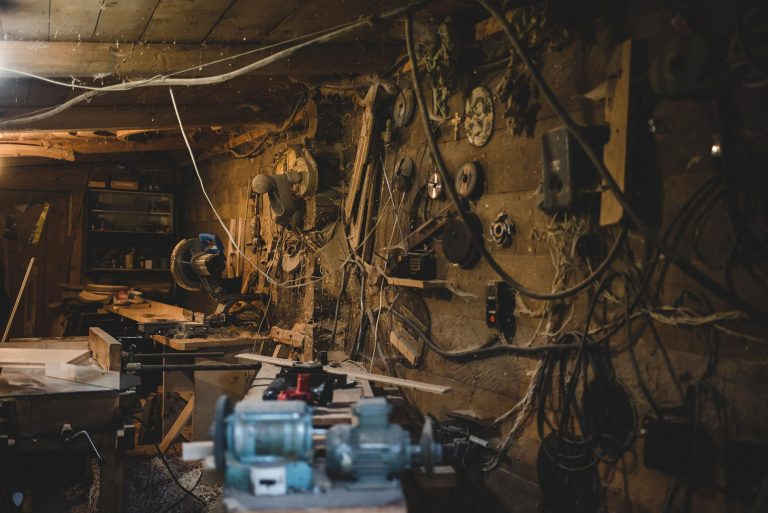
slideshow
“I’ve made about 33 pieces of hutsul cymbals. Just the hutsul ones. There are one of my cymbals in Canada, two in Poland and some in Germany. Mostly I was making it where there was a demand for it, where the musicians were playing. I was making it mostly for Verkhovyna. I was also making it for Yaremche, Vorokhta, Mykulychyn, Kosmach.”
Ivan treats his musical instruments with respect and love:
“This is the beginning of new cymbals. They are as small as Hutsul cymbals, but with the Hungarian side. Now I’m making cymbals for children who study at the School of Music in Putyliv, Chernivtsi region. It’s the order from their parents. This is a brief deck in the cymbals. Here are wirbelbanks. It’s also called ‘babý’ in mountains, but actually, it’s just wirbelbanks. Usually there are two wirbelbanks. Then there’s a frame like this, two bars and again a frame. The clips are inserted to the inside for maintaining the top deck. So that’s the beginning of the cymbals. Here are pegs for strings supporting: on the one side and on the other side pegs are the same. There is an upper deck and ‘kobylky’ on the top. The ‘kobylky’ – it’s a stand or a string support. That’s how looks like the beginning of the cymbals.”
Wirbelbank
A wooden board, which is designed for fixing whips (strings), on which strings are stretched.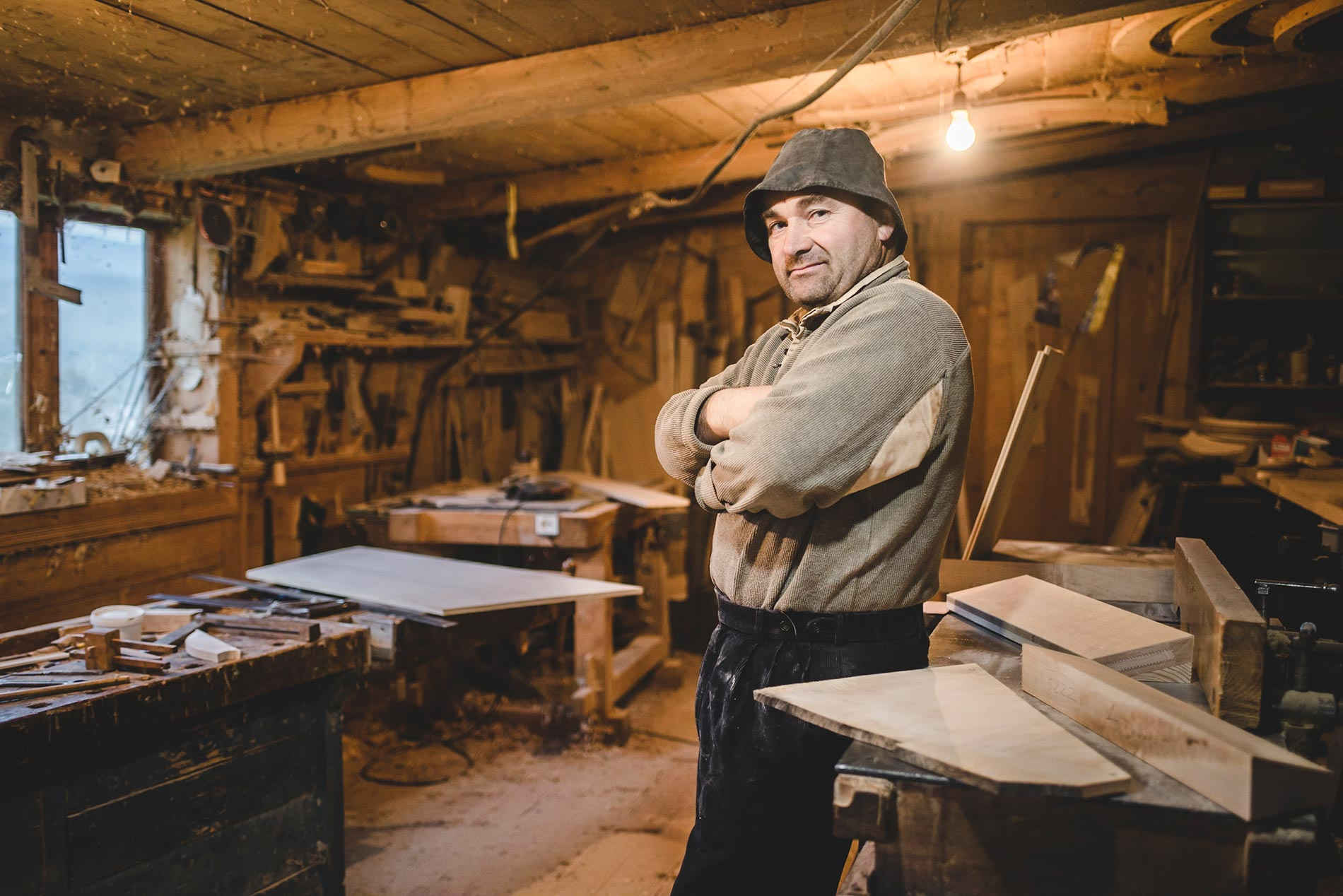
Today the father and the son play together at weddings:
“We have even the whole choir. Though we have a Yamaha piano and hardware too. But sometimes we play without any musical equipment. Sometimes that happens.”
The music inspires and unites two generations. The creative family popularized with its example the drive for art and love for life.

